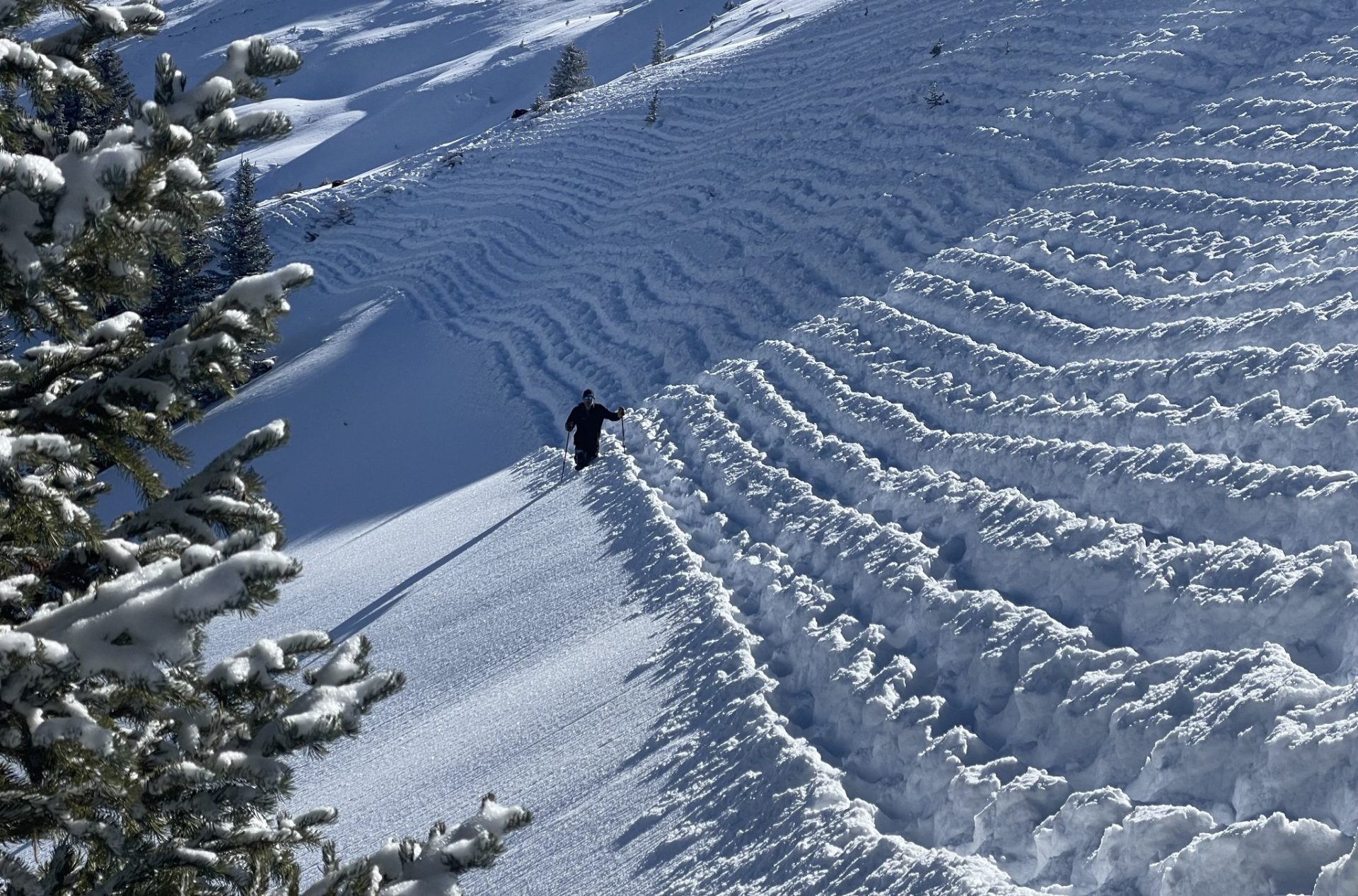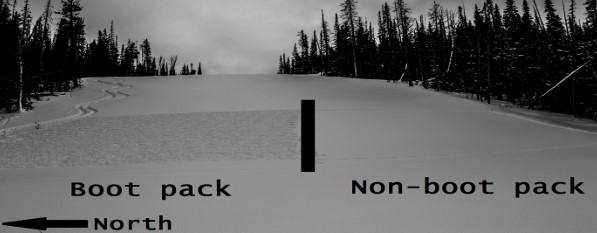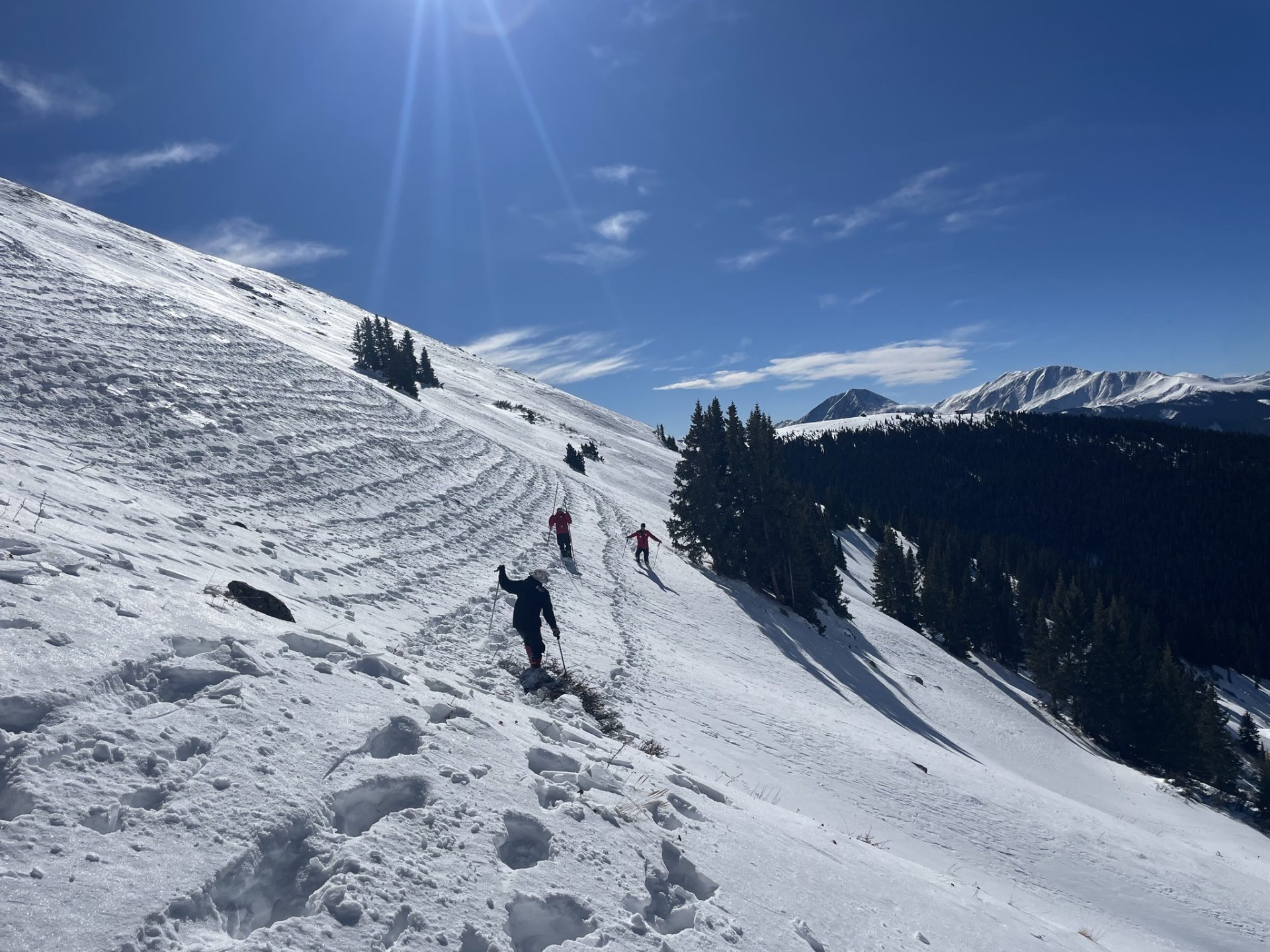
As more snow hits the U.S. and skiers and snowboarders anticipate the rope dropping on their favorite terrain, it is not always as simple as waiting on enough snowfall.
That is what the ski patrollers at Keystone Resort, Colorado, know, which is why they spend time boot-compacting (or boot packing) its avalanche terrain. The resort shared on its social media pages some pictures and videos of the work it takes to open the terrain above the treeline with the following caption:
Opening Keystone’s high alpine terrain takes a lot more work than just simply waiting on Mother Nature to deliver the goods. With the early season snowfall, Keystone Ski Patrollers will boot compact Keystone’s avalanche terrain in efforts to create a more cohesive snowpack for the remainder of the ski season. Boot packing forms columns in the snow, breaking up potential weak layers and allowing new snow to fill in those holes creating “columns” of stability. This is one of many tactics our patrollers will use to keep early season snowfall in place and allow future snowstorms to set up on top of this layer for some great season long skiing. While we’re still a few more weeks away from skiing above treeline, hard work like this gets us closer and closer!
Does Boot Compacting Work?
Boot-packing is a technique that is widely used in an attempt to disrupt depth hoar, weak layers, and persistent weak layers to increase variability across a slope, thereby increasing overall slope stability. In theory it makes sense.
A study on the effectiveness of boot packing for snowpack stabilization was conducted in 2012 at Big Sky, Montana. A 50 meter by 25 meter, relatively uniform slope, was split into two equal areas with one being extensively boot packed, while the other remained undisturbed. Observations were made in both boot-packed and non-boot-packed plots until both areas were unreactive with respect to results using Extended Column Tests (ECT).

Results showed that density and hand hardness increased in the boot-packed area in comparison to the non-boot-packed area. In addition, in the boot-packed area there was a measurable increase in ECT scores and a change in fracture character of the basal layers. In the non-boot-packed area, the ECTs propagated (ECTPs) for a full nine weeks longer than in the boot-packed area. This study’s data indicates that boot-packing can be an effective tool for helping to stabilize persistent weak layers, so we can have a long, safe season.
As the ski season unfolds, taking proactive steps like boot packing can make a meaningful difference in mitigating avalanche danger. By stabilizing weak layers and breaking up potential slabs, this simple yet effective technique contributes to safer conditions for everyone on the slopes.
